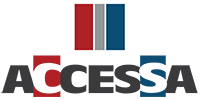With the upsurge in the economy, our customers have recently experienced steady sales growth. Generally, a rise in sales equates to positive gains. However, attaining higher production targets on the finishing line can lead to changes and disruptions that hurt the bottom line. Here are 4 ways you can routinely evaluate your finishing line design plan to help maintain your business objectives.
1. Carry Out Design Audits:
Designing a flexible, efficient finishing line can be time-consuming and intense, and it’s easy to say, “Job well done!” once it’s in place. But failing to audit your finishing line and process can lead to costly consequences.
As our clients’ coating partner, we recommend they proactively work to identify and solve issues on an ongoing basis—from the design stage to ongoing routine reviews. Though a well thought out finishing line design is essential, day-to-day monitoring of the finishing process is also critical. Routine monitoring helps you:
- Be aware of necessary adjustments before they become more costly
- Make needed improvements to support your production goals
- Make enhancements to increase efficiency
- Take steps to retain the current cost of goods
- Better manage fluctuating production demands
2. Align Business and Operational Objectives:
Though many of our clients are experiencing growth in these early months of 2015, they still remain cautious and vigilant. They want to do what they can to ensure their investments align with conservative long-term business and operational bottom-line objectives.
Therefore, as a resource to their finishing line design team during planning, review and budgeting, our recurring question is, “What is your end-result expectation?”
Why do we ask this? The answers to this question can help predict and solve business and operational issues that have the potential to adversely affect the bottom line or quality of the finished product.
For example:
Let’s say your production demands increased by 10 percent in August. The humidity is high, so the line speed specification was adjusted faster to meet the production increase. The end result did indeed produce 10 percent more finished product. You’re ready to celebrate because your end result met the expectation, right? Not so fast.
By speeding up the line speed, the curing process changed, and now we have blocking occurring during packaging and shipping. So while production soared, the end result had quality issues, costing you both lost production time and rework costs.
3. Know Your Clients’ Expectations:
 Our follow-up question to clients is, “What does your client expect?” Today’s consumers are more empowered and educated then ever before. They conduct online research and search for business reviews before ever speaking to a prospective partner. If you disappoint a customer one too many times, they will look for a partner elsewhere.
Our follow-up question to clients is, “What does your client expect?” Today’s consumers are more empowered and educated then ever before. They conduct online research and search for business reviews before ever speaking to a prospective partner. If you disappoint a customer one too many times, they will look for a partner elsewhere.
Typically, we hear clients recall customer complaints that center around quality, performance or delivery. Daily monitoring of your finishing line production and quality reports will help you manage these issues before they become a customer satisfaction concern. Once you have a customer, keep the lines of communication open so you know what their priorities and concerns are before matters reach the level of “complaint.”
The bottom line: Understanding, meeting and exceeding the client’s expectations can keep you competitive.
4. Consult Your Coatings Provider:
There is a science to deciphering which coatings are suitable to meet product use and production needs. Changes on a finishing line, even if they are minor, can often adversely modify the appearance and performance of the finish.
Consult with your Accessa Coatings Consultant when you see any changes in physical appearance, performance, manufacturing output, assembly, packaging or delivery issues. We can help make sure your finishing process is supporting your overall sales.
Could your finishing line be improved? Contact us to help you find smarter solutions so your business can keep growing.
